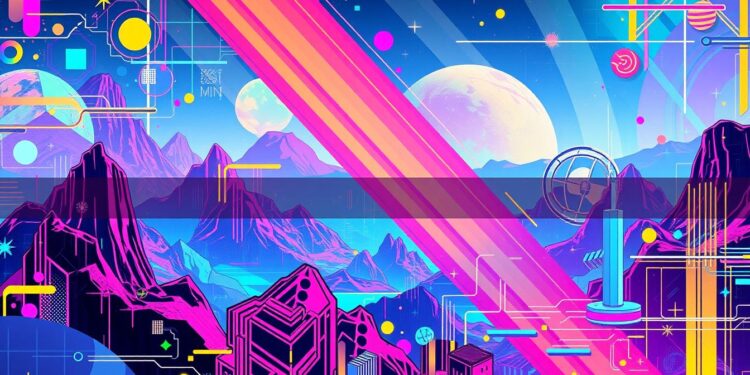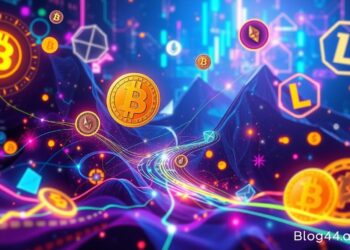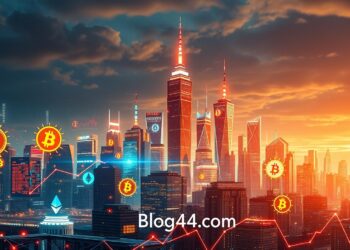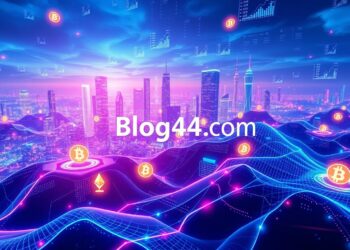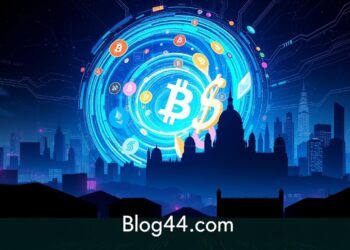Non-fungible tokens (NFTs) have changed the digital world. They let us see digital assets in a new light. The NFT market is growing fast, expected to hit $60 billion by 20241. This opens up big opportunities for creators and collectors to make money from digital art, music, and videos2.
NBA Top Shot made $700 million in sales3. Beeple’s $69 million NFT sale at Christie’s was a big deal3. The NFT world is booming, with more people getting into digital collectibles1. This guide will show you the exciting world of NFTs. We’ll explain the tech, talk about trends, and help you understand digital ownership.
Key Takeaways
- NFTs have opened up new possibilities for creators and collectors to monetize and trade digital content.
- The NFT market has experienced significant growth, with high-profile sales reaching millions of dollars.
- Ethereum’s NFT implementation differs from TON’s unique standard, with implications for scalability and gas consumption.
- Metadata plays a critical role in describing NFTs and collections, including names, descriptions, images, and attributes.
- The environmental impact of blockchain networks like Ethereum has raised concerns about the sustainability of NFTs.
What Are NFTs and How Do They Work?
Non-Fungible Tokens, or NFTs, are unique digital assets. They show ownership of digital or physical items. They use blockchain technology, mainly Ethereum, and smart contracts to check authenticity and ownership4.
Definition of NFTs
NFTs are unique digital tokens. They can represent many digital things, like artwork, music, and virtual real estate. Each NFT is different and can’t be swapped for another identical one, unlike Bitcoin or Ethereum, which can be5.
The Technology Behind NFTs
Blockchain technology is what makes NFTs work. It’s a digital ledger that keeps transactions safe and open. Smart contracts are key for NFTs. They help manage and verify ownership and transfers of these unique digital assets5.
Key Characteristics of NFTs
- Uniqueness: Each NFT is one-of-a-kind and can’t be copied or swapped for another identical one.
- Indivisibility: NFTs can’t be split into smaller parts, keeping the digital asset whole.
- Provable Scarcity: The blockchain technology behind NFTs lets only a limited number of unique digital items be made. This creates a sense of scarcity and value.
NFTs’ unique features have made them popular in digital art and collectibles. They help creators and collectors prove and trade unique digital assets5.
“The rise of NFTs could mean digital creators get fairer pay for their work.”5
| Metric | Value |
|---|---|
| Job Outlook for Craft and Fine Artists (2023-2033) | 3% growth4 |
| Median Annual Wage for Craft and Fine Artists (May 2023) | $52,9104 |
| Average Annual Salary for Digital Artists in the US | $70,643 (range: $58,000 – $104,000)4 |
The Rise of NFTs in Digital Art
Non-Fungible Tokens (NFTs) have changed digital art a lot. They let artists prove their work’s ownership and authenticity online6.
Historical Context and Evolution
The NFT market has grown fast, with some sales hitting millions6. This growth comes from NFTs’ ability to create unique digital items. Now, the NFT market sees weekly sales of $181 million, up 111% from last year6.
Current Trends in Digital Art NFTs
Today, digital art NFTs are more diverse than ever. Artists are creating everything from digital paintings to interactive pieces6. New blockchain ecosystems like Solana and Polygon are also playing a big role, with $45.5 million in weekly sales6.
The average NFT transaction value has jumped 87%, from $71.11 to $133.086. This shows more people are confident and interested in NFTs. NFT marketplaces are key to this growth, connecting artists and collectors6.
The future of digital art looks bright. With more people joining, higher transaction values, and new blockchain ecosystems, the market is set to grow6.
“The rise of NFTs has transformed the way we think about digital ownership and the monetization of digital art. It’s an exciting time for artists and collectors alike.”
The digital art NFT market is full of opportunities for everyone7. With more blockchains, higher transaction values, and sustainable growth, the future is promising6.

Major NFT Marketplaces
The world of non-fungible tokens (NFTs) has grown a lot. Now, we have many digital asset platforms. OpenSea, Rarible, and Foundation are the top ones.
OpenSea: A Comprehensive Overview
OpenSea is the biggest NFT marketplace, with over 4 million items for sale8. It has everything from art and collectibles to in-game items and virtual real estate. Its easy-to-use interface makes it a favorite for both new and experienced NFT collectors.
Rarible: Community-Driven Marketplace
Rarible focuses on the community, letting users create and sell their own NFTs8. It’s a place where artists and creators can show their work and earn money. The platform also has its own token, RARI, which lets users help decide how it grows.
Foundation: Curated NFT Platform
Foundation is all about quality digital art. It picks only the best works to feature8. This makes it a top spot for collectors looking for unique and rare digital art NFTs.
Other big names in NFTs include LooksRare, Solanart, and Magic Eden. Each offers something special in the NFT Trading, Digital Asset Platforms, and Ethereum Marketplaces world9. Whether you’re an artist, collector, or just curious, these platforms are full of chances to dive into the exciting world of NFTs.
| Marketplace | Key Features | Specialization |
|---|---|---|
| OpenSea | Wide range of digital assets, user-friendly interface | General NFT marketplace |
| Rarible | Community-driven, allows users to create and sell NFTs | Decentralized, user-generated NFT platform |
| Foundation | Curated digital art, rigorous selection process | High-quality, exclusive digital art NFTs |
| LooksRare | Innovative features, alternative to OpenSea | Niche and specialized NFT offerings |
| Solanart | Focused on Solana-based NFTs | Solana ecosystem-specific NFT marketplace |
| Magic Eden | User-friendly platform, growing Solana-based NFT offerings | Solana-focused NFT marketplace |
“The rise of NFT marketplaces has revolutionized the way we approach digital ownership, creating new opportunities for artists, collectors, and enthusiasts alike.”
How to Buy NFTs
Getting into non-fungible tokens (NFTs) is exciting and rewarding. But, it takes a few steps to start. First, you need a compatible crypto wallet like MetaMask or Trust Wallet10. These wallets help you safely store and manage your cryptocurrency, key for buying NFTs.
After setting up your wallet, you’ll need to get some cryptocurrency, usually Ethereum (ETH), for transactions10. Many NFT marketplaces accept different cryptocurrencies, but ETH is the most common10. You can buy Ethereum from places like Crypto.com, Coinbase, or Binance.
Step-by-Step Buying Process
With your crypto wallet and Ethereum ready, you can start looking and buying NFTs. Here’s how:
- Link your crypto wallet to an NFT marketplace, such as OpenSea, Rarible, or Foundation11.
- Look through the NFT collections and projects that catch your eye11.
- Choose the NFT you want to buy, either by paying a fixed price or bidding in an auction1011.
- Finish the deal by sending the needed Ethereum (or other accepted crypto) from your wallet to the marketplace10.
Remember, there might be extra fees, like gas fees on Ethereum, for your NFT buys10. Make sure to include these costs in your budget.
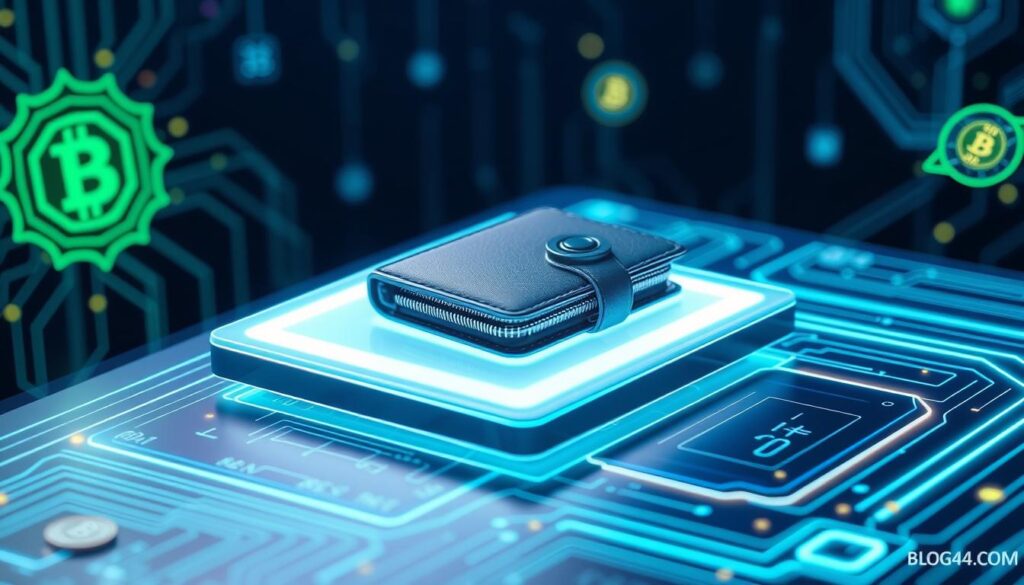
Buying NFTs can be both thrilling and profitable. But, it’s important to be careful and know the risks11. By following these steps and learning about the NFT market, you can start your digital collecting journey with confidence1011.
Creating Your Own NFTs
Exploring the world of NFTs opens up new ways to express yourself digitally and own your creations. It’s exciting and empowering for artists, creators, and entrepreneurs12.
Tools and Platforms for Creation
To start making NFTs, pick the right blockchain like Ethereum, Solana, or Polygon. Each has its own benefits12. Sites like OpenSea, LooksRare, and Rarible make it easy to mint without coding12. NiftyKit also offers no-code tools for managing your NFTs13.
Understanding Smart Contracts
Smart contracts are key in NFT deals, setting rules for sales and royalties. Knowing how they work is vital for protecting your work13. Tools like Token Tool help set prices and limits easily13.
Tips for Artists
Artists should focus on making unique, high-quality digital art that speaks to their fans12. Building a community and engaging with collectors is important for success12.
Whether you’re new or experienced in NFTs, the opportunities are endless. Use the right tools and platforms to share your digital art and explore NFT minting1213.
“The NFT space is a canvas for boundless creativity and self-expression. Embrace the tools and platforms available to bring your digital visions to life.”
Legal Considerations for NFTs
NFTs (Non-Fungible Tokens) are changing fast, and knowing the law is key. Issues like copyright, ownership, and taxes are important. It’s vital to understand these to navigate the NFT market safely.
Copyright and Ownership Concerns
NFT artworks are selling for millions, showing their value14. But, copyright issues are big. Unauthorized use of copyrighted material is common in NFTs14. This raises questions about who owns what in the digital world14.
Regulations in the U.S.
In the U.S., NFT laws are changing. The SEC is figuring out how to handle NFTs15. A lawsuit could change the rules for NFTs and affect artists like Jonathan Mann15.
Tax Implications of Selling NFTs
Selling NFTs can lead to big tax bills. They’re seen as capital gains, so you might have to pay taxes on profits16. With the market growing fast, artists and collectors need to watch their taxes closely.
Understanding NFT laws is essential. Artists and collectors should talk to lawyers and tax experts. This helps protect their rights in the fast-changing digital world.

“The legal landscape surrounding NFTs is constantly shifting, and it’s vital for artists and collectors to stay informed and seek professional guidance to ensure the protection of their rights and assets.”
The Role of Communities in NFTs
In the world of non-fungible tokens (NFTs), communities are key. They thrive on platforms like Discord and Twitter. These NFT Communities are vital for growth and success in the NFT world17.
These communities drive the NFT space forward quickly. Web3 projects use tokens or NFTs to encourage participation and content creation17. As they grow, they innovate and adopt new ideas fast, thanks to community efforts17.
Trust in NFTs comes from the project team and the community17. These social media groups help new users learn through tutorials and AMA sessions17. They also give community members a say in the project’s direction17.
Many Web3 projects use gamic features to boost community involvement17. Features like Airdrops and Referral Quests make people feel part of something big. They also help the community grow and support the project17.
The importance of communities in NFTs will only grow. These hubs will shape the future of digital ownership and collectibles18. They will lead the way to a decentralized and community-driven Web3 ecosystem18.
Environmental Impact of NFTs
Non-fungible tokens (NFTs) are getting more popular, but they raise environmental worries. The energy needed for blockchain tech, like Proof-of-Work (PoW), is getting a lot of attention19.
Traditional NFTs on Ethereum, a PoW blockchain, use a lot of energy for mining19. But, new, energy-saving blockchain tech is being made. For example, Ethereum 2.0 is switching to Proof-of-Stake (PoS)1920.
Blockchain Energy Use
Before switching to PoS in September 2022, one Ethereum transaction used more energy than a U.S. home in a day20. A single NFT on PoW platforms like Bitcoin or old Ethereum had a carbon footprint of about 90 kg of CO2 per year20. But, after switching to PoS, NFTs’ carbon footprint has dropped a lot, though it depends on the blockchain20.
Sustainable Crypto and Green NFTs
Eco-friendly blockchains like Tezos, Solana, Polygon, and Flow are now used for minting and trading NFTs. They use PoS or other energy-saving tech, cutting down energy use and carbon footprint19. Also, some platforms are using carbon offsetting and funding green projects to lessen their environmental impact19.
Creating sustainable crypto and green NFTs helps the planet and saves money for businesses. It also makes brands look good and attracts eco-aware customers19. As green rules get stricter, companies using these solutions can stay legal and grow their market19.
Switching to greener blockchain tech and adopting green NFTs is a good step. It helps solve the environmental problems of this fast-growing digital world192021.
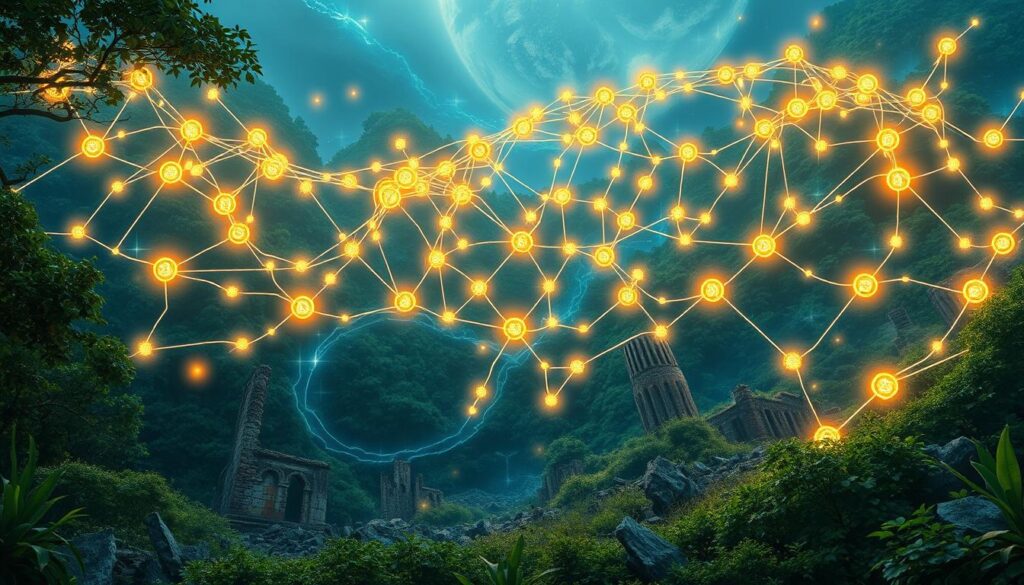
| Blockchain | Energy Efficiency | Sustainability Efforts |
|---|---|---|
| Ethereum (Pre-PoS) | High energy consumption due to Proof-of-Work | Transitioning to Proof-of-Stake (PoS) to reduce energy use |
| Tezos | Energy-efficient Proof-of-Stake consensus | Funding renewable energy projects, reforestation |
| Solana | Highly scalable Proof-of-Stake blockchain | Investing in carbon offsetting strategies |
| Polygon | Layer-2 scaling solution on Ethereum | Collaborating with environmental organizations |
| Flow | Designed for efficient NFT minting and trading | Developing eco-friendly blockchain solutions |
“The environmental impact of NFTs has attracted criticism, prompting the development of green NFTs to address sustainability concerns.”19
NFTs Beyond Art and Collectibles
NFTs started in digital art and collectibles but now reach more areas. They change how we deal with digital stuff and fun22. They’re making new money paths and making things more fun for users.
Use Cases in Gaming
In gaming, NFTs mean special items players can own, trade, and earn22. This makes a lively digital market where players feel they own and can make money from games23. NFTs bring new life to gaming, mixing virtual and real values.
Incorporating NFTs in Music and Entertainment
The music world is getting into NFTs too23. Artists use NFTs for special albums, digital art, and virtual items. This gives fans unique digital treasures24. The entertainment field is also using NFTs for tickets, merch, and fan talks, opening up new ways to make money and connect with fans.
NFTs are growing and changing, moving beyond art and collectibles22. They’re changing industries and how we enjoy digital things23. The future of NFTs is full of promise, exciting many sectors.
The Future of NFTs
The future of non-fungible tokens (NFTs) looks very promising. Experts predict the market will grow a lot and see new blockchain innovations. By 2024, the global NFT market revenue could hit $2.4 billion25. This growth is fueled by more people using NFTs and their role in virtual and augmented reality.
In gaming, the NFT market is expected to jump from $4 billion to $15 billion by 202725. Games like Axie Infinity already have over 2 million players daily. This shows how big blockchain gaming and digital asset ownership can get25. The metaverse is also growing fast, with virtual real estate market expected to grow by over 31% by 202825. The biggest metaverse land sale was $4.3 million in the Sandbox virtual world25.
But, the future of NFTs isn’t without challenges. There are regulatory issues, market saturation, and the need for better user experiences. Yet, improvements in cross-chain interoperability and sustainable blockchain solutions are on the horizon26.
NFTs are not just for art and collectibles. They have many uses, like digital identities, certifications, and even managing credit history26. Their versatility could change many industries, from healthcare to finance, by making data management and ownership secure and transparent26.
As the NFT market evolves, it will blend blockchain innovation with the digital asset future. This will change how we see, interact with, and do business in the virtual world27.

“NFTs are not just about digital art; they represent the future of digital ownership and a new paradigm for how we interact with the digital world.”
| Key Trends | Potential Challenges |
|---|---|
|
|
Successful NFT Projects and Artists
The world of NFTs has seen many success stories. Digital artists and projects have caught the world’s attention. They have made a big impact on the digital world.
Highlighting Iconic NFT Sales
The NFT market has grown fast, reaching over $60 billion in value28. This growth is thanks to amazing sales that have amazed everyone. Beeple’s “Everydays: The First 5000 Days” sold for $69 million28.
CryptoPunks, a leading NFT project, have sold for millions. One piece sold for $11.8 million28. The Nyan Cat NFT sold for $560,00028. RTFKT’s digital sneaker launch made $3 million28.
These sales show NFTs’ power as a new art and collectibles medium. They open doors for new artists to explore digital possibilities.
Emerging Artists to Watch
A new wave of digital artists is emerging. They are using NFTs to create new stories and experiences. Decentraland’s virtual land sold for over a million dollars28. Axie Infinity’s gaming world has over 2 million players and billions in revenue28.
As NFTs become more popular, we look forward to more innovative projects and artists. They will shape the future of this exciting digital world.
| NFT Project | Notable Achievements |
|---|---|
| CryptoPunks | One NFT sold for $11.8 million28 |
| Beeple’s “Everydays: The First 5000 Days” | Sold for $69 million28 |
| Nyan Cat | Sold for $560,00028 |
| RTFKT’s Digital Sneakers | Launched with $3 million in revenue28 |
| Decentraland LAND | Virtual land parcels sold for over $1 million28 |
| Axie Infinity | Over 2 million active players monthly, generating billions in revenue28 |
“The success of these NFT projects shows the huge promise of digital art and collectibles. They can captivate audiences and change the creative world.”
As the NFT market grows, so will the stories of success and innovation. They will inspire the next generation of digital artists and entrepreneurs29.
Investing in NFTs: Risks and Rewards
Non-Fungible Tokens (NFTs) have caught the eye of the digital art and collectibles world. They offer exciting investment chances but also come with big risks30. To succeed in the NFT market, you need to understand the tech, market trends, and possible dangers30.
Understanding Market Volatility
The digital asset world, including NFTs and cryptocurrencies, has grown fast. It promises big returns but is very unstable30. Prices can change a lot in one day30. Things like supply and demand, big investor actions, and rules can affect NFT values30.
Tips for First-Time Investors
First-time investors should be careful and diversify their portfolios30. Spreading investments across different types can protect against market swings30. It’s also key to research the tech, the project or artist, and the rules30.
The NFT market can be very rewarding but also risky31. Data shows that 98% of 2024 NFTs didn’t make money, with only 0.2% showing any profit31. This shows the need to choose wisely and focus on quality and reputable creators31.
Scams and “rug pulls” have become common in the NFT world31. These are when creators leave, leaving investors with nothing31. This has made buyers more careful due to rules and controversy31.
Investing in NFTs is all about finding the right balance between risk and reward30. By understanding the market, diversifying, and doing your homework, you can aim for gains while avoiding big losses30.
| Metric | Value |
|---|---|
| NFTs launched in 2024 that are unprofitable | 98% |
| NFTs launched in 2024 that have yielded positive returns | 0.2% |
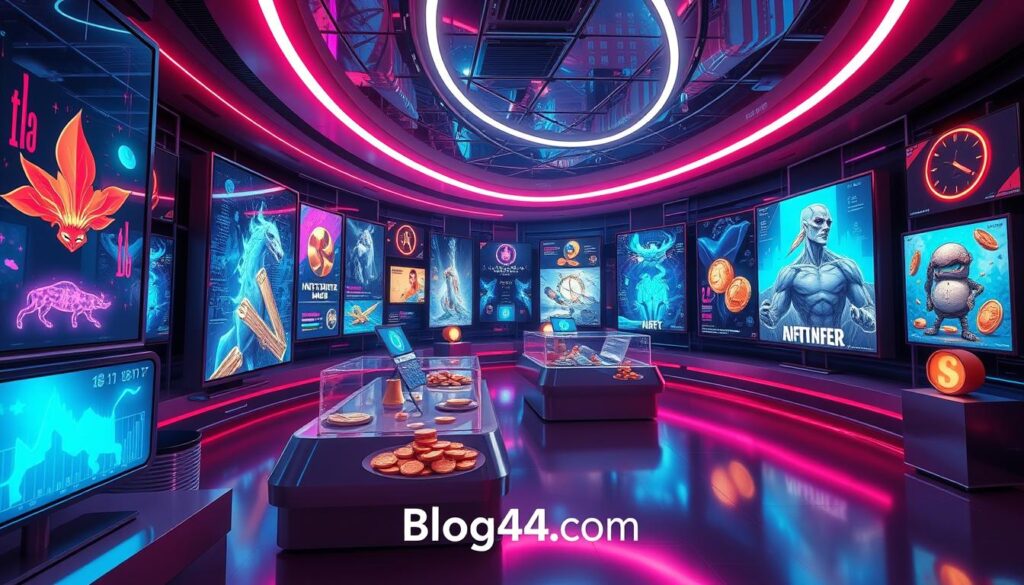
“The successful 0.2% of NFTs focus on quality, utility, popular creators, and tangible benefits.”31
Popular NFT Trends to Watch
Virtual Real Estate and Metaverse
The Metaverse is growing fast, and so is the demand for virtual real estate. Places like Decentraland and The Sandbox are getting more attention. People and businesses want to buy digital land32.
These virtual lands let users own and build their own spaces. They can create unique experiences and make money.
Utility-Driven NFTs
Utility NFTs are becoming more popular. They offer real benefits and access to special services. These NFTs can be event passes or unlock exclusive content33.
They give more than just digital art or collectibles. This shows a move towards NFTs that are useful in real life.
The NFT market is set to change a lot. Sales might drop by 11.01% from 2024 to 2025. But, the average revenue per member could be around $59 in 202432.
This could mean a more stable NFT world. It might focus more on usefulness and user experience.
Investors and fans should watch these trends closely. Owning virtual land and getting special benefits through NFTs could change how we use digital assets.
| Trend | Description |
|---|---|
| AI-Driven NFTs | Increasing integration of AI algorithms into the NFT space. |
| Real-World Asset Tokenization | Growing trend of representing physical assets as NFTs. |
| Utility-Driven NFTs | Rising popularity of NFTs with additional functionalities beyond ownership. |
| Sustainable Practices | Push for environmentally sustainable practices within the NFT industry. |
| Integration with Gaming | Significant role of NFTs in enriching gaming experiences. |
These trends show how fast and changing the NFT world is. As technology gets better, we’ll see more new uses for digital assets33.
Recent data shows big changes in the NFT market34. CryptoPunks’ share grew from 23.6% to 33.6% in 2023. But BAYC’s share dropped from 29.3% in January 2022 to around 12%34.
Niche collections like Pudgy Penguins and Milady Maker are growing. They have strong communities34. Platforms like Blur are now zero-transaction fee, making them more competitive34.
“The ability to own virtual real estate and access exclusive benefits through NFTs could redefine the way we engage with digital assets in the years to come.”
Keeping up with the Metaverse and utility NFTs is key. It’s important for both individuals and businesses to stay informed in this changing world of non-fungible tokens.
Conclusion: The Next Frontier in Digital Ownership
NFTs are changing how we own and create digital assets. They bring new chances for creators, collectors, and investors in many fields. This includes art, entertainment, gaming, and virtual real estate35.
Recap of Key Points
We’ve looked at NFT technology, marketplaces, and legal issues. We’ve also talked about how communities and the environment are involved36.
The future of NFTs looks bright. The market could hit $80 billion by 2025 and maybe $231 billion by 203035. As NFT tech grows, they’ll likely become a big part of our digital lives36.
Encouragement to Explore NFTs
There are challenges, like fixing royalty issues and finding tech solutions. But the possibilities for new ideas and value are huge35. We suggest you learn more about NFTs and how they might change digital ownership and creation36.
FAQ
What are NFTs?
NFTs, or Non-Fungible Tokens, are unique digital items. They can be anything from digital art to real-world objects. They’re stored on a blockchain, which proves they’re real and who owns them.
How do NFTs work?
NFTs use blockchain tech, like Ethereum, and smart contracts. These ensure ownership and authenticity. They’re unique and can’t be copied or destroyed, making them special digital items.
What are the key characteristics of NFTs?
NFTs are unique, can’t be split, and are scarce. They can be anything digital, like art or music. This makes them special and valuable.
How has the NFT market evolved in the digital art world?
NFTs have changed digital art, letting artists prove their work’s ownership. The market has grown fast, with big sales reaching millions.
What are some popular NFT marketplaces?
Top NFT marketplaces include OpenSea, Rarible, and Foundation. They offer a wide range of digital items and are easy to use.
How can I buy NFTs?
To buy NFTs, set up a crypto wallet and buy Ethereum. Then, connect your wallet to an NFT marketplace. Remember, there are fees for transactions.
How can I create my own NFTs?
To make NFTs, pick your digital asset and blockchain. Use NFT creation platforms. Knowing smart contracts is key for setting up sales and royalties.
What are the legal considerations for NFTs?
NFTs raise legal questions about ownership and copyright. Laws are changing, and selling NFTs can have tax implications. Always talk to legal and tax experts.
How important are NFT communities?
NFT communities are very important. They offer a place for discussion, support, and collaboration. Being part of a community helps artists and projects grow.
What is the environmental impact of NFTs?
NFTs use a lot of energy, mainly because of Ethereum’s mining. This has raised concerns about their environmental impact. But, there are efforts to make NFTs more sustainable.
How are NFTs expanding beyond art and collectibles?
NFTs are now used in gaming, music, and entertainment. They represent in-game items, music releases, and fan engagement. This opens up new ways to make money and connect with audiences.
What is the future outlook for NFTs?
NFTs are expected to grow and innovate more. They’ll become more popular, integrate with virtual reality, and enter new industries. But, there are challenges like laws, market saturation, and improving user experiences.
What are some successful NFT projects and artists?
Successful NFT projects include CryptoPunks and Bored Ape Yacht Club. Artists like Beeple have made headlines with big sales. New artists are also making waves in digital art and collectibles.
What are the risks and rewards of investing in NFTs?
Investing in NFTs can be rewarding but risky. Their value can change a lot due to trends and speculation. New investors should do their research, start small, and diversify.
What are some popular NFT trends to watch?
Watch for trends like virtual real estate in the metaverse and utility NFTs. These offer real benefits or access to services, not just collectibility.


